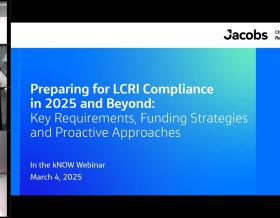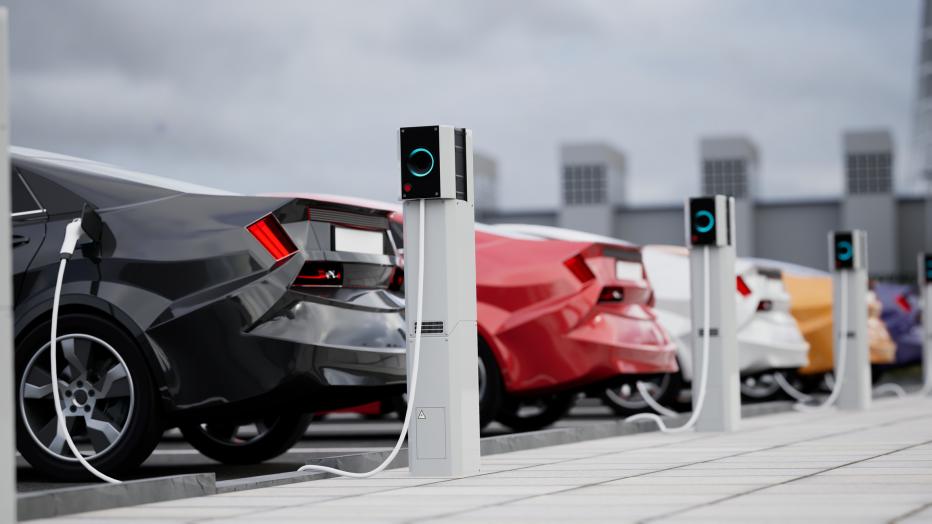
Airport decarbonization is a complex challenge globally with shared obstacles such as energy grid management and resilience, electrification uncertainty (changing formats and specialist vehicles), a lack of data and standards and, crucially, high investment costs. Airport-specific factors, such as policy, regulation and local context, add to this complexity. The challenge is: How do you plan a successful long-term decarbonization strategy with so many market uncertainties and pressure on operational savings and power grid management?
With a longer-term view, Jacobs’ research has already provided a roadmap for the future of hydrogen plane fueling, ready for the first hydrogen-powered aircraft expected by 2035. More immediately, we’ve also taken a look at how airports and related services are also rapidly electrifying, mapping out the significant power infrastructure investments needed to support electrification in airport ecosystems across the U.S. One of the pioneers embracing short-term opportunities to achieve net zero in this is Heathrow Airport Limited (HAL), playing a pivotal role in facilitating the major shift to more sustainable vehicles as part of its larger decarbonization strategy. The transition to zero-emission vehicles is anticipated to make one of the single biggest contributions to cutting carbon emissions from surface access at Heathrow Airport.
As a result, anticipating future changes in vehicular access with electric vehicles (and eventually autonomous vehicles) is a crucial challenge for Heathrow. The airport must be at the forefront of adapting to change and encouraging and facilitating more sustainable airport access options.
These shifts need to be achieved in the local context of three key influencing factors: The Government’s commitment to stop the sale of new petrol and diesel vehicles from 2035, the London Mayor’s Zero Emission Capable licensing stipulations for the taxi and private hire vehicle market, and the strategy for decarbonizing the London bus fleet.
As part of developing a Landside Electric Vehicle (LEV) strategy for Heathrow Airport, the Jacobs team identified five steps that can help create a significant, cost-effective start of a longer-term decarbonization strategy that adapts to thrive in current market uncertainties.
- Start with the right goals and airport role.
This task heavily depends on local context and longer-term decarbonization goals. It can be challenging to define due to conflicting needs. For HAL, the goal is to increase public and shared transport and to lessen congestion, but not to bring more cars to the airport to charge. It will help to lower carbon emissions more effectively and offer more cost savings. It will also benefit local communities — the airports can act as a “good neighbor” by lowering congestion on local routes.
One way to do this is to limit the LEV infrastructure to passengers, airport staff and other stakeholders. To ensure airports take this first step correctly, stakeholders from both landside and airside must be included in the long-term plans, and a social value lens must be applied in all decision-making.
The Heathrow 2.0 Sustainability Strategy of February 2022 acts as a stepping stone toward HAL’s aim to achieve net zero by 2050 and focuses on the period up to 2030. It has set a target to cut carbon emissions from flying by up to 15% and from ground operations by at least 45% compared with 2019 levels. This will be achieved by enabling passengers and colleagues to access the airport sustainably, delivering a net zero supply chain, replacing airport vehicles with zero-carbon alternatives, and investing in buildings and infrastructure.
The specific aims contributing to the 45% carbon reduction from ground operations between 2019 and 2030 include:
- Halve surface access carbon emissions.
- Cut carbon emissions from airport vehicles (airside and landside) by 87%.
- Cut supply chain carbon emissions by 36%.
To achieve this, HAL needs to increase the use of public transport for passenger and employee access and provide the correct infrastructure for electric vehicle charging at the airport. As part of our research with HAL, we discovered that the requirements for charging differ widely by user group and location around the airport campus. As a result, we recommend a tailored, iterative plan that adapts and grows with the changes in the electric vehicle market.
- Investigate and forecast EV uptake.
As part of this study, we undertook a wide-ranging review of available data and evidence on current EV uptake, including specialist vehicles and the future trajectory. This review specifically assessed likely uptake in the U.K., but this was also informed by some international experience. At the time of the study (late 2022), plug-in vehicles represented over 20% of new car registrations in the U.K. In addition to the fast-accelerating growth since 2020, pure battery-electric vehicles have overtaken plug-in hybrids, which had dominated the plug-in market before 2019. Different projections for future uptake have been reviewed, and the analysis suggests that by 2027, over 20% of the U.K. vehicle stock will be fully electric vehicles or plug-in hybrids.
Proportions in London will likely be higher due to the Ultra Low Emission Zone standards. This isn’t due to the standards demanding hybrid or electric technology; they drive faster turnover in the local car market. The uptake for the taxi and Private Hire Vehicle market will be even higher due to the Mayor’s licensing requirements. All this data helps to inform infrastructure decisions and the greatest LEV and carbon priorities.
- Analyze operations to target the most significant opportunities.
Collecting the correct, timely EV data is one key factor, but it also needs to dovetail with the needs of the different passenger groups, airport staff and other users. HAL aims to provide the correct number of charging points for legitimate airport users and needs to consider the commercial case for making that investment. A key point here is that HAL doesn’t want to attract unnecessary demand to the airport for the purpose of charging. Alongside this, HAL wants to uplift passenger experience and become a market leader in this airport decarbonization.
Our analysis separately considered the needs of park-and-fly and kiss-and-fly passengers, the taxi, minicab and car rental market, airport employees, freight, buses and coaches. As a part of this, we considered:
- What is the charging need for the key user groups that must be delivered?
- Can that charging service be delivered safely and in an operationally and economically viable fashion?
This identified separate requirements for rapid charging hubs and slow charging points at different locations, as well as pantograph charging for buses.
This analysis was supplemented by a series of targeted engagement sessions with a broad range of key stakeholders to fully understand ongoing activities around zero-emission vehicles and the unique charging infrastructure requirements across different airport user groups. This included discussions with local government, public transport operators, car rental companies, taxi operators and airlines. We also consulted with fire safety specialists about the risks of vehicle charging at the airport, particularly within multi-story car parks.
A phased infrastructure investment plan is crucial, as EV technologies and charging formats are changing rapidly. These uncertainties are higher in specific areas, such as specialist vehicles and Heavy Goods Vehicles, and this varies globally. This is where the strength of bespoke, context-specific research and analysis will make the difference between success and investing in the wrong infrastructure. This plan is coupled with finding the right strategic partner to provide iterative, data-driven insights for the short- and long-term decarbonization journey.
- Create a tailored, sequential strategy and five-year plan.
All airports differ in priorities, challenges and electrification opportunities—no one-size-fits-all blueprint exists. While our study focused on landside factors only and the stakeholders involved, airports will have more control of airside elements (such as airlines and ground handlers). As there are fewer stakeholders and user groups to engage, airports can be more proactive and timelines fast-tracked.
One of the biggest lessons learned in this study for all airports is that HAL doesn’t need 10,000 charging points immediately; the action plan should rely on a measured, data-driven roll-out. To this end, we developed a targeted implementation plan by user group and location, with separate recommendations for the next 12 months and the one-to-five-year timeframe. This plan specifies the number and type of charging stations required by location and year up to 2027.
This strategy and five-year focus include the following:
- Reviewing all user-group requirements and demands.
- Consideration of existing and upcoming technology for deployment.
- Review of the ZEV market, identifying key players in terms of manufacturers, operators, business models and operating models.
- Identification of potential operating and commercial models.
- Integration with vehicle and passenger movements and balancing performance indicators such as experience and transit time.
- High-level assessment of power requirements across the site and the role of smart grid charging and renewable energy generation as investments.
- Consideration of safety and risks.
- Set up a schedule of constant testing and analysis.
While there are a few potential “quick wins” to be gained from this strategy, there are no guarantees in how zero-emission travel will evolve. As a result, there needs to be a schedule of testing to match and support infrastructure investment.
Alongside this study, Jacobs is leading a critical workstream within Heathrow's Carbon & Sustainability Program which uses an internally developed analysis methodology to evaluate carbon reduction initiatives in terms of £/tCO2e saved over the project lifetime. This helps provide assurance on the effectiveness of capital investment. The workstream involves evaluating airside and landside projects to determine expected cost and carbon benefits, tracking benefits against targets and enabling prioritized capital delivery both within projects and at a program level.
Work included evaluating the impact of EV charging infrastructure investments. This revealed that these projects are major contributors to the airport's overall drive to cut carbon on the ground by 45% by 2030. The projects also typically demonstrate a viable marginal abatement cost when benchmarked against other initiatives within the program and the Department for Energy Security & Net Zero carbon values used for modeling. As part of a phased implementation plan, we’ve recommended that HAL continues to monitor the usage of infrastructure to inform investment decisions for future rounds of implementation.
Igniting new standards for the industry
By following the Heathrow 2.0 Sustainability Strategy and partnering up to do LEV studies like this one, HAL is pioneering airport decarbonization for Europe and the rest of the world. HAL wants to play a critical role in supporting the transition to electric vehicles across user groups by making the correct infrastructure available on-site where and when needed.
It requires answering the key question outlined at the start: How do you plan an infrastructure delivery and network when there are so many uncontrollable market uncertainties? By collaborating with the right strategic partner with cross-sector expertise, master planning skills, program management experience and data-driven measurement and decision-making tools.
About the authors

Hermann Maier is a transport planner with 36 years of experience in both the public and private sectors, specializing in public transport, demand forecasting and economic appraisal. He has extensive experience in high-speed rail and airport surface access, having supported high-speed rail projects in the U.K., Australia, Sweden, U.S. and U.A.E. For airports, he has led surface access work at Glasgow, Edinburgh, Heathrow, Gatwick and Stansted Airports in the U.K. Hermann has also provided expert advice on Melbourne, Brisbane and Los Angeles Airports as well as new airport developments for Manila, Bangkok, Riyadh and Warsaw.

Alec Curley is our capability lead for Future Mobility. He has a comprehensive track record of working globally to deliver electric vehicle infrastructure strategies and enable successful studies, fleet transition, wider strategic transport analysis, appraisal, and ultimately, the design of electric mobility interventions for both public and private sector organizations. Alec has a wealth of technical expertise alongside a detailed understanding of the challenges associated with planning and delivery. Central to this has been Alec’s ability to lead multi-disciplinary teams that have embedded these interventions into local strategies and developed supporting business cases to capture funding and enable delivery. His involvement and leadership of multiple project teams have been critical in supporting clients with developing electric vehicle strategies and governing ongoing and future infrastructure investment to meet wider policy objectives.
You might be interested in...
-
 News
NewsPre-Empting Rising Power Demand at Airports: US Lessons for European Frameworks
With the rise in air travel and the increasing drive for electrification within decarbonization strategies, pressure is ramping up on power grids. Jacobs Regional Aviation Leader Cheryl McNall shares three lessons for European airports from a U.S. research report.
-
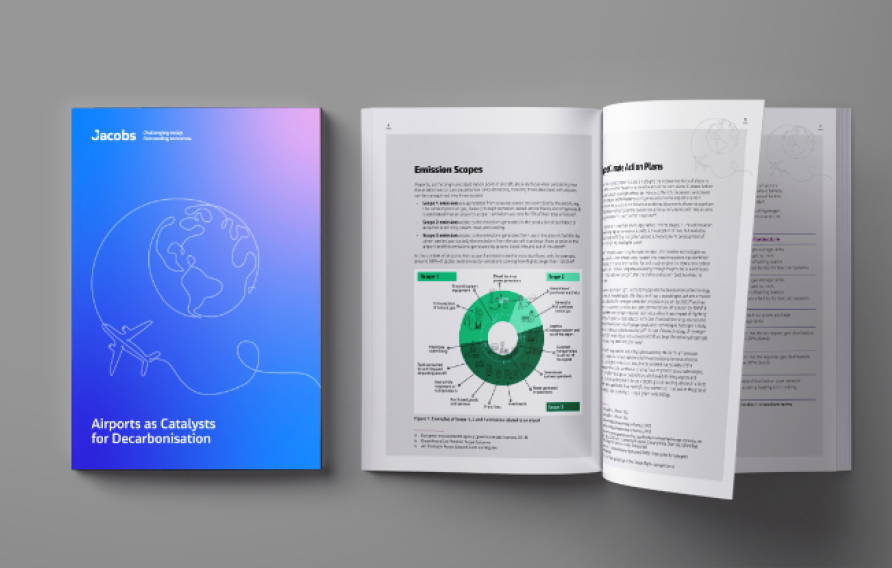
 Report
ReportAirports as Catalysts for Decarbonization
New Jacobs research provides roadmap for the future of hydrogen plane fueling, ready for the first hydrogen-powered aircraft expected by 2035.
-
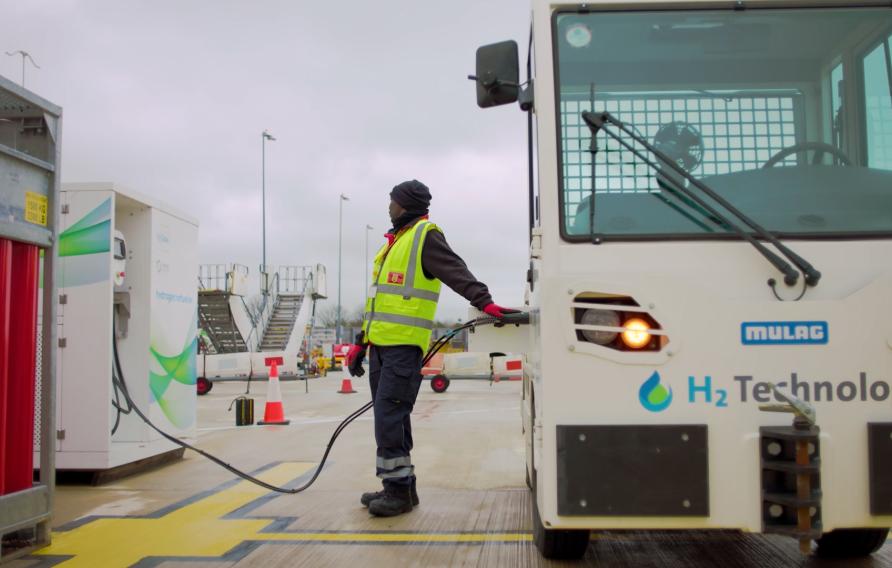
 Report
ReportNew Report on the UK’s First Airside Hydrogen Refueling and Operational Trial
Explores how a ground-breaking airside hydrogen refueling trial in the U.K. is a critical step on the journey to achieving zero-carbon emission aviation, by building experience with hydrogen and improving understanding of what’s needed to develop hydrogen refueling regulations.
-
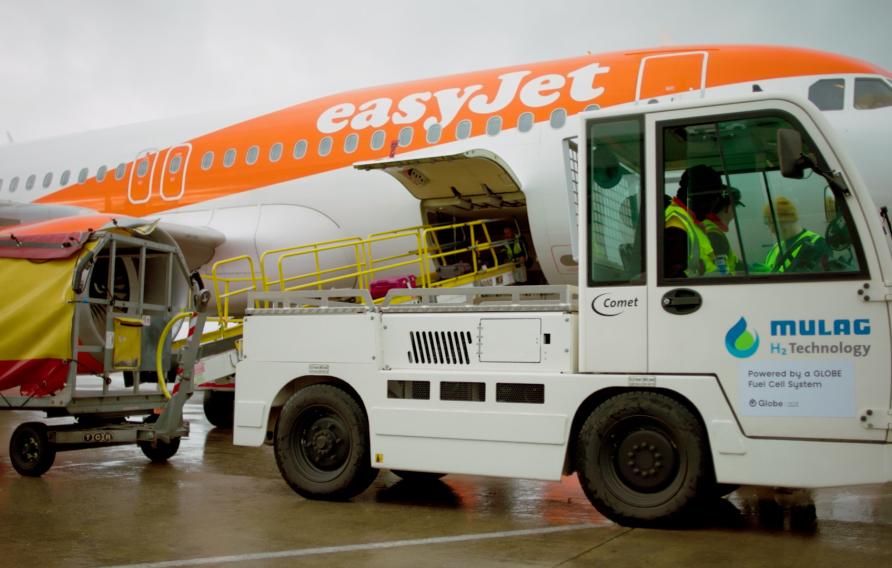 News
NewsJacobs Supports Ground-breaking Airport Hydrogen Trial in the UK
A ground-breaking airside hydrogen refueling trial, led by easyJet and supported by Jacobs and cross-industry partners, has been successfully completed at Bristol Airport – the first airport trial of its kind at a major U.K. airport. Read more about how the trial demonstrates that the gas can be safely and reliably used to refuel ground equipment in a busy, live airport environment.
-
 News
NewsWhat Will it Take to Support Zero-Carbon Emission Flights?
What will it take to support zero-carbon emission flights? In the latest issue of Infrastructure Intelligence magazine, Jacobs Transportation Sustainability Specialist Chris Pickard looks at how airports can prepare now if they are to be ready to fuel hydrogen-powered aircraft and become catalysts to support wider decarbonization.









